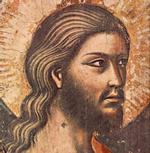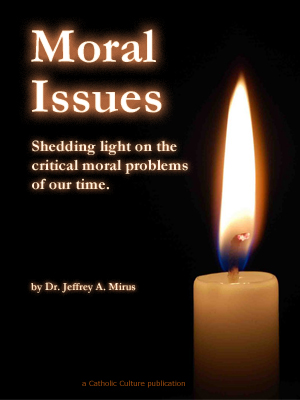Mother Church of the World
Green is the color which symbolizes hope. That is one explanation for green Mass vestments during the long succession of Sundays after Pentecost: hope in God makes life worthwhile. But today, with its white or gold, is a joyful feast on its own, as we recall the dedication of the archbasilica of the Most Holy Saviour.
Some find it difficult to be enthusiastic about a church building; but this church is a special one—the Bishop of Rome's cathedral. As the Pope's church, it is a clear symbol of Catholic unity. And you may read this proud title inscribed on its walls: "Mother and Head of all the churches of the city and the world."
THE STORY OF THE LATERAN BASILICA
The mother church stands on one of the hills of Rome called the Lateran. Early in the history of Christianity a large house here served for worship, and when the Emperor Constantine allowed peace to the Church, the Pope took up residence. That began the tradition of the papal church with elaborate ceremonial for ordinations and great feasts. In course of time, a Benedictine monastery was established nearby. Its monks looked after services in the papal church, and their patrons, St. John the Baptist and St. John the Evangelist, became so popular that the church's original title was almost forgotten. You probably know this church of the Most Holy Saviour as St. John Lateran. But it's not the name that matters; it is the dedication. For on that day, as Jesus said, "salvation has come to this house."
Dedication means that a person or thing is given over completely to a cause. In this case, a building was given over completely to God's cause. Its premises could no longer be used for worldly purposes or commerce; you recall Christ's rebuke to those who bought and sold within the Temple precincts at Jerusalem: " "My house shall be called a house of prayer' " (Matthew 21, 13 13, quoting Isaias 56, 7). This house of prayer Pope St. Sylvester I dedicated, using holy chrism in its consecration.
St. Sylvester reserved the church's high altar to the Pope's use. This papal altar was an exception to the rule that altars be of stone, containing relics of martyrs. Instead it consisted of a table used by St. Peter for the Mass, a grand relic in wood without martyrs' relics. Although Peter's original table is now encased in stone, this remains the only altar in the world without its martyrs: association with the first Pope dignifies it sufficiently to make it suitable for the sacrifice.
AN IMPORTANT ASSOCIATION WITH BAPTISM
Besides this link with St. Peter and the Eucharist, the Lateran basilica is the principal church for the celebration of the Easter Vigil. The reason is historical. In your missal you can see for this vigil "Station at St. John Lateran." The Pope, his assistants, and the laity used to walk processionally to different churches in Rome. On the vigil of Easter, their station, or stopping place, was "at the Lateran," where our Pope Sylvester had inaugurated a splendid baptistery in a separate building adjoining the basilica.
Emperor Constantine probably supplied materials for the edifice, but unfortunately was never baptized here. 'When near death he was baptized, but at the hands of an Arian bishop. Still, Constantine helped the peaceful spread of the Church and the erection of the first Lateran basilica.
Some parts of this most ancient church survived Vandal barbaric destruction, a mighty earthquake in 896, and the restorations of the thirteenth, eighteenth, and nineteenth centuries. Possibly the earlier building was architecturally more satisfying, but today's Lateran basilica is what it always was: "the dwelling of God with men" (Apocalypse 21, 3, Lesson at Mass), where God dwells with them as their God.
THE PURPOSE OF THE FEAST
By making the dedication of the papal church a feast throughout the world, the Church intends to stress Catholic unity without detracting from the glories of lesser churches. Other churches also have feasts, and each diocese celebrates the anniversary of its cathedral's dedication. Every church consecrated with chrism and marked on its stone-work with twelve crosses has its anniversary. But today, all churches everywhere, even bare rooms in poor towns, or huts in tropical missionary lands, align themselves in prayer with the Church's church: "Grant that whosoever enters this temple to ask good things from thee may rejoice in the obtaining of all his petitions" (Collect).
While we have one great High Priest, Jesus Christ, one Sacrifice in the holy Mass, one Faith, one Baptism, still it is for our convenience that in thousands of places we have God's temple, with thousands of human priests through whom Christ acts. The underlying unity of the Catholic Church compares with Christ's seamless robe: it is a mark of true Christianity.
For more than a thousand years successive popes ruled the true Church from their home near the Lateran basilica. Now, basilica means "house of a king," and you will recall that Pilate styled Jesus "King of the Jews" in mockery. Today the Lateran basilica is home of the King of Kings, and occasions a feast of praise. But the feast's special significance is that the Vicar of Christ the King maintains this church as his cathedral. The Pope lives now on the Vatican hill, near St. Peter's church, but he keeps the tradition of St. Sylvester: "This is that holy place in which the priest prays for the offences and sins of the people" (Breviary).
This item 6145 digitally provided courtesy of CatholicCulture.org






